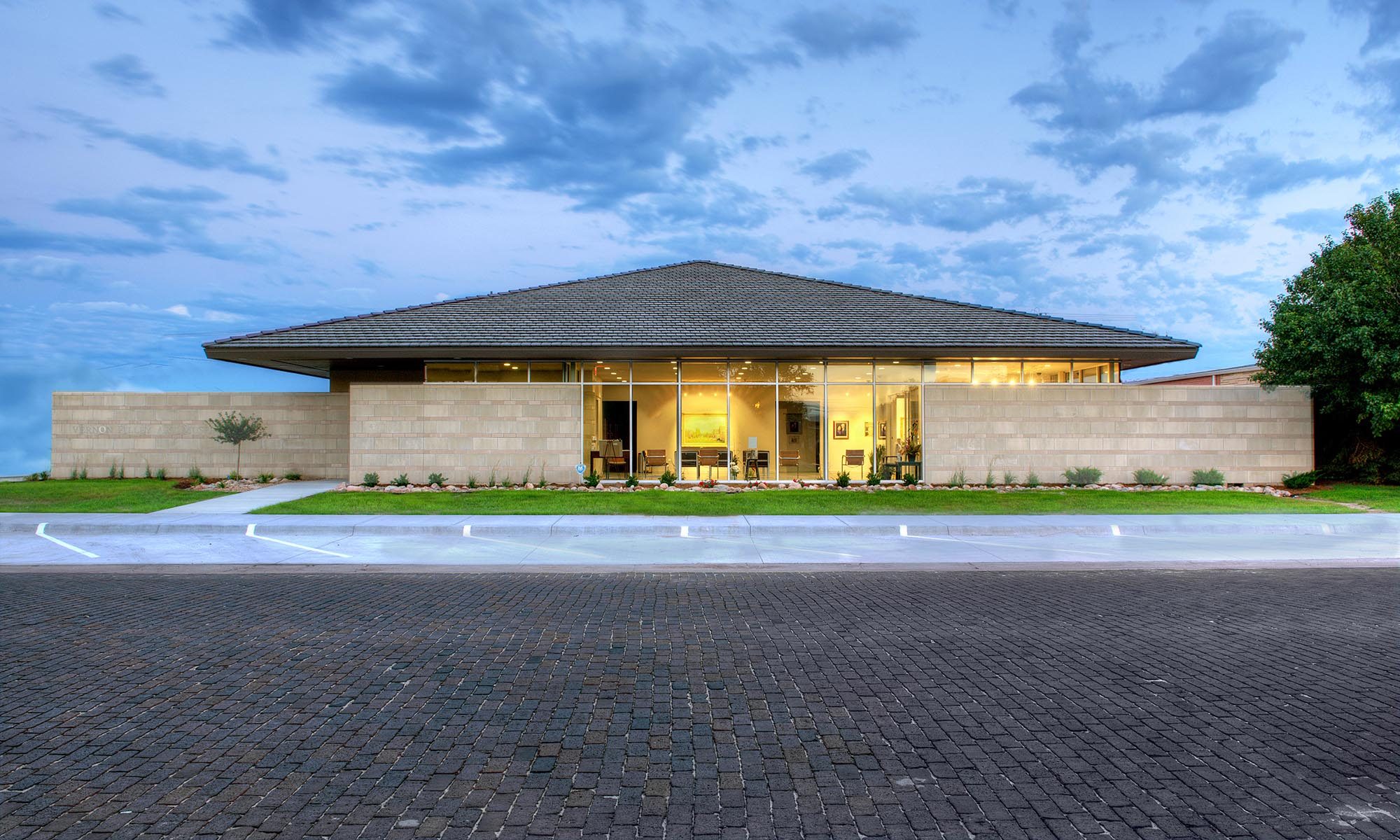The Dr. Vernon and Emily “Mimi” Filley Permanent Collection
Collection information and background
Emily “Mimi” and Dr. Vernon W. Filley moved to Pratt in 1952 so Dr. Filley could establish his surgical practice where he worked throughout his lifetime. The Filley’s had a second home in Santa Fe, New Mexico, where Mimi became personally acquainted with many artists and gallery owners. She commissioned, bought, and collected art in the Southwest style encompassing a great variety of mediums, techniques, and subjects. The Filley permanent collection gifted to the art museum includes a sizable extensive collection with over 100 renowned artists represented. Mimi’s purchases were based on whether she liked the art piece and many focused on the Taos era artists. She selected works that she found aesthetically pleasing or historically significant. The results of her life long mission to collect has spurred a truly unique and diverse group of artwork full of portraits, still-lifes, and landscapes done in the plein air tradition, highlighting a variety of mediums: aquatint, watercolor, lithography, oil, acrylic, sculpture, etching, gouache, drawing, giclee print, photography, and pastels. The works span multiple genres representing everything stylistically from impressionism pre and post 1940 to realism. The Filley Art Museum is honored and fortunate to have such a unique and diverse collection in its care.
Mimi’s heart is in Pratt. The Vernon Filley Art Museum is fulfilling Mimi’s dream to have the Filley art collection remain in Pratt. In addition to donating the permanent collection of artwork, Mimi also donated the funding for the construction of the state of the art museum facility. Mimi’s generous donation was made in honor of her late husband, Dr. Vernon Filley. The Filley donations are a gift to the Pratt area and its citizens.
The museum staff, board of directors, and Pratt area citizens are eternally grateful for the generosity of the Filley family and they are honored to fulfill Mimi’s desire to display the permanent collection in addition to having a gallery for visiting exhibits and artists and support a variety of disciplines for varying youth and adult groups through their art classes.
A few of the artists represented in the collection include: Birger Sandzen, Ramon Kelley, Beatien (Little No Shirt) Yazz , Andrew Dasburg, Gerald Curtis Delano, Gene Kloss, Dane Clark , Doel Reed, Doug Dawson , Charles Merrick (Chilli) Capps, Joseph Stephen Bohler, Lowell Elsworth Smith, Roger Williams, Harrison (Haskay Yahne Yah) Begay, Barbara Latham, Albert George Handell , William (Bill) Maughan, Raymond L. Knaub, Jimmy Dyer, Gerald Farm, Ramon Rice, Walt Gonske, Galust Berberian, Ila Mae McAfee, Otto August Kuhler, and John Encinias.
The mission of the Filley Art Museum is to be a cultural center for the purpose of collecting, preserving, and exhibiting art. Their goal is to enhance cultural life in Kansas by providing access to the arts through exhibits and education.
These components will reach far into their goals for programming Many local and regional supporters in the Pratt region have donated toward operations for the museum and contributed to help launch the programming for this new non-profit organization. The organization has also won three grants to date. The museum will have a diversified revenue structure generating income from the museum gift shop, facility rental, membership, admission, art classes, and grants. The gift shop is on its way to becoming a unique shopping destination for the area with its diverse inventory encompassing jewelry from vendors like the Metropolitan museum of art to a variety of consignment artists of all disciplines.
The museum aims to spur a revival of the artistic and creative events and groups in the Pratt region. Establishing itself as a renowned fine art museum and community gathering place. As a leader in arts programming, the museum hopes to support local art walks, festivals, and collaborative programming through out the area. A key component to their programming will be events surrounding frequently changing guest exhibits and rotations of segments of the constantly evolving permanent collection. A collections management committee aids in evaluating and accepting new art into the collection continually.

